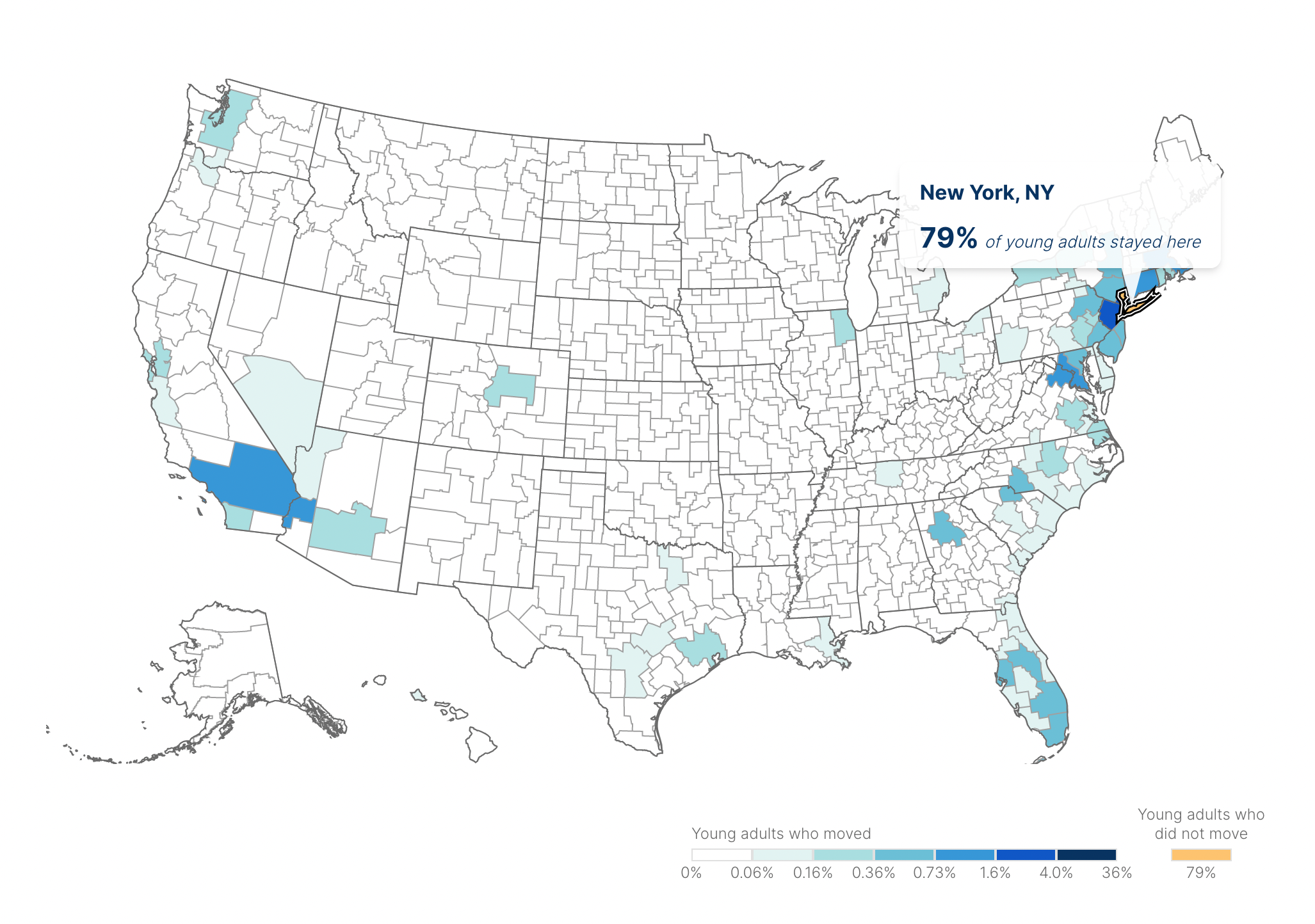Where you live and work is highly dependent on where you grew up. A recent study using data from the U.S. Census Bureau looking at migration patterns found that 80% of young adults move less than 100 miles from where they grew up—90% live less than 500 miles from where they grew up. Migration distances are shorter for Black and Hispanic individuals and those from low-income families.
Here’s an example of migration patterns from people who grew up in the New York City area.

What are the top destinations?

Read The Radius of Economic Opportunity: Evidence from Migration and Local Labor Markets.
See also:
- Remote work has the potential to drastically increase the ‘Radius of Economic Opportunity’ mentioned by the authors but compliance is a limiting factor for employers and access to broadband internet is a limiting factor for workers
- This seems like a more localized example of the significance of persistence in predicting economic outcomes
Links to this note
-
The Radius of Economic Opportunity Is Limited
The economic benefit of increased wages is highly localized. 8 in 10 people live within 100 miles of where they grew up and disadvantaged groups are less likely to move for higher wages. In total, 99% of the residents of a given area (i.e. commuter zone) would live there even if there wasn’t strong wage growth.
-
One of the silver linings of the COVID-19 pandemic is that work and place are decoupling is increasing the radius of economic opportunity. Previously, where you live and where you work were tightly coupled, but with the rise of remote work, more jobs can be done in more places.